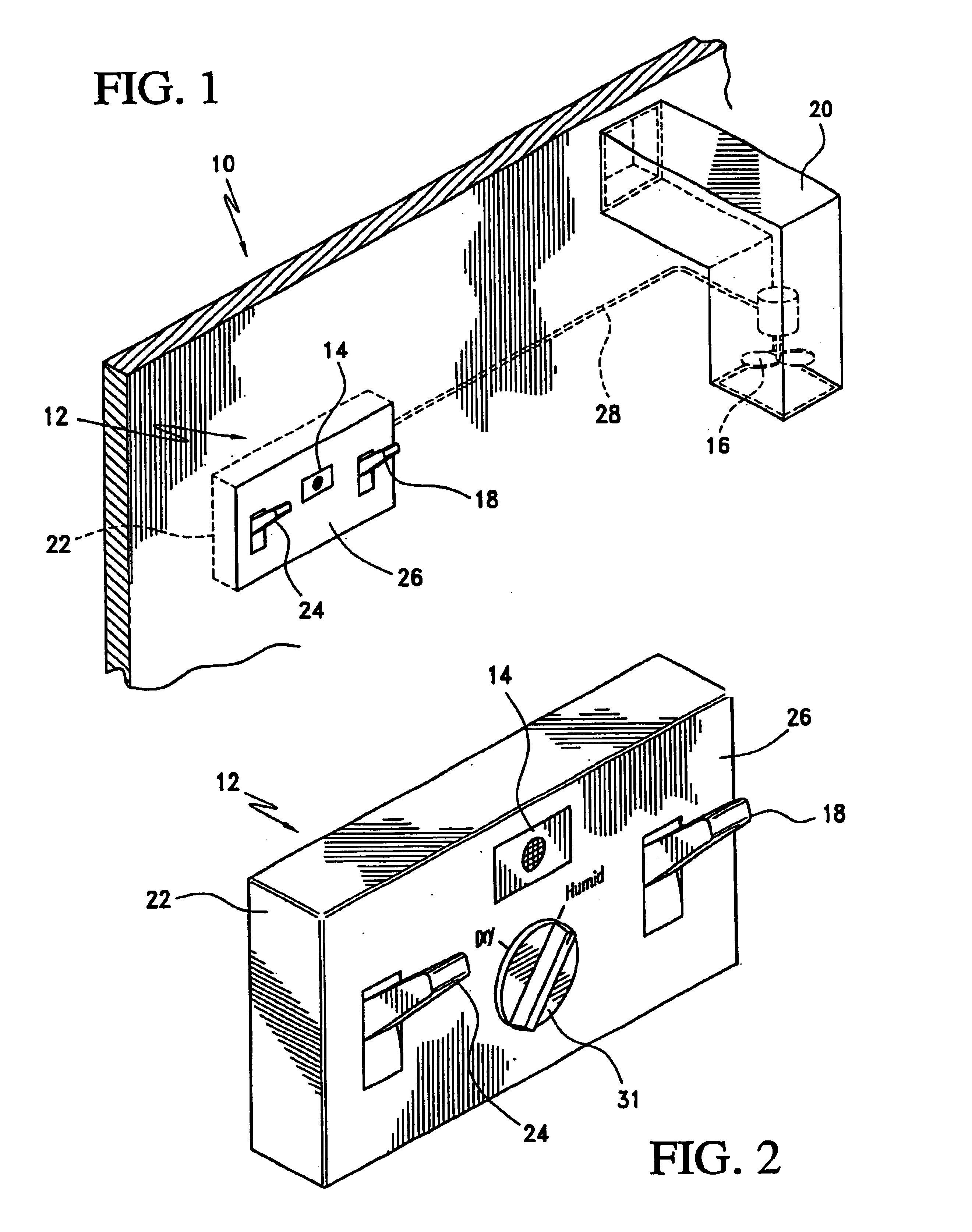Ventilation system with humidity responsive ventilation controller
a technology of ventilation controller and humidity, which is applied in ventilation systems, heating types, instruments, etc., can solve the problems of mold growth, humid conditions in rooms, condensation or dew on the room's surface, etc., and achieve satisfactory humidity level, prevent, or reduce, the effect of humidity
- Summary
- Abstract
- Description
- Claims
- Application Information
AI Technical Summary
Benefits of technology
Problems solved by technology
Method used
Image
Examples
Embodiment Construction
[0023]While the invention is described herein with reference to illustrative embodiments for particular applications, it should be understood that the invention is not limited thereto. Those having ordinary skill in the art and access to the teachings provided herein will recognize additional modifications, applications and embodiments with the scope thereof and additional fields in which the present invention would be of significant utility.
[0024]Referring initially to FIG. 1, there is illustrated generally at 10 a first preferred embodiment of a ventilation system in accordance with the present invention. In this first preferred embodiment, a ventilation controller 12 incorporates a single humidity sensor 14. Ventilation controller 12 is connected to switch on power to an exhaust fan 16 and it may include a manual fan switch 18, which, if included, activates exhaust fan 16 directly, bypassing controller 12. The manual fan switch could operate the fan indefinitely or for a set peri...
PUM
 Login to View More
Login to View More Abstract
Description
Claims
Application Information
 Login to View More
Login to View More - R&D
- Intellectual Property
- Life Sciences
- Materials
- Tech Scout
- Unparalleled Data Quality
- Higher Quality Content
- 60% Fewer Hallucinations
Browse by: Latest US Patents, China's latest patents, Technical Efficacy Thesaurus, Application Domain, Technology Topic, Popular Technical Reports.
© 2025 PatSnap. All rights reserved.Legal|Privacy policy|Modern Slavery Act Transparency Statement|Sitemap|About US| Contact US: help@patsnap.com



